Setting off on your first trip to fish Wimbleball once we are over this crisis will be thrilling to say the least. Whether alone or with a mate, during the journey your mind will no doubt be buzzing with excitement & anticipation, of course that’s normal & why we go fishing, but this time we will feel like freed caged animals.
You will no doubt be mulling over tactics, floating or intermediate line? A team of flies or maybe just a big lure on a sinking line? Should we fish Bessoms, Ruggs or maybe go down to Cow moor? Some good fish were coming out of Bessoms before lockdown, should we still use lures or are better off with Diawl Bachs & buzzers on the washing line? All of these thoughts & ideas will be creating inspiration & certainly help towards a successful day but just maybe the weather & the fish may have forgotten to read the script.
Not only that but as you get your first view of Wimbleball nestled within the beautiful rolling hills of Exmoor, you are maybe thinking two things, wow have I missed you; and at the same time, where on earth am I going to start…
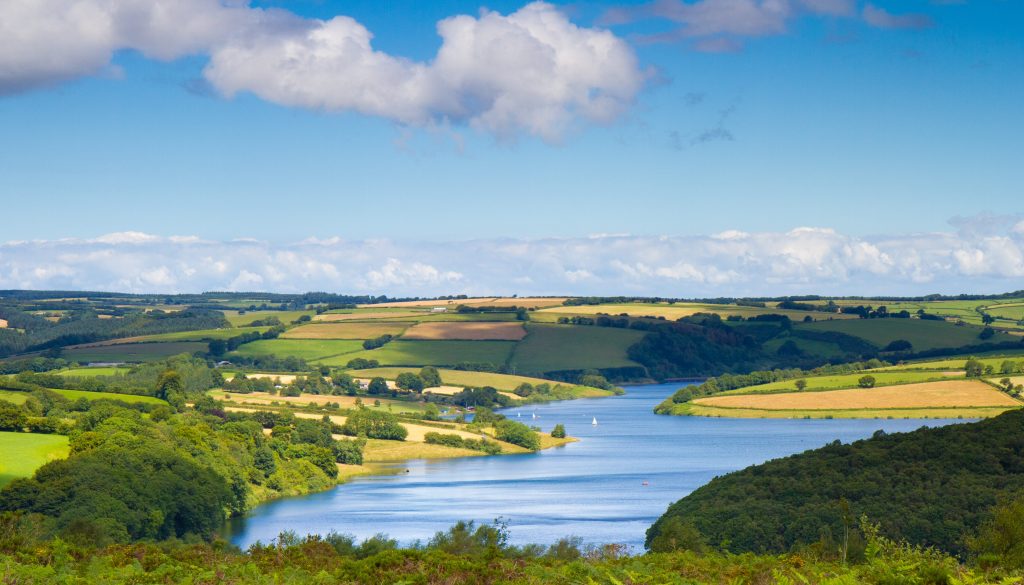
Using the wind direction to improve your catch
Don’t let the wind frustrate your fishing, learn how to use it to your advantage. One example most fly anglers understand from day one, is that you want a breeze to be blowing from the opposite side to your casting arm. Two main benefits of this, casting is easier & your flies will drift along naturally with the wind & allow a safer lift off, with the flies away from your body.
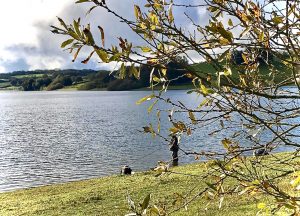
Another good practice will be to find a bank where the wind is blowing onto the shore. Ideally you will want it coming in at an angle & again as before preferably from the opposite side to your casting arm.
This onshore breeze option can increase the catch rate for more native fish that have become accustomed to searching out their food & in this case the fish are coming down wind looking for food, searching margins for dislodged food from wave action or are moving up the bank into the face of a wind created drift current.
On the same theme, recently stocked fish will often follow the wind then end up holding in the bays along the lee shore.
Northerly & Easterly winds especially early & late in the season are likely to be cold & dry.
Either polar or continental air streams which push the fish down & often require you to seek out the steeper drop offs that can be accessed from the shore, Bessoms being the obvious example, but could prove challenging in an Easterly.
A preferred wind with many anglers is a warm South to South-Westerly breeze, provided it is not too stiff. It can help encourage insect hatches, create wind lanes & encourage surface feeding, offering some great dry fly sport. All areas of the lake can then potentially be hot spots.
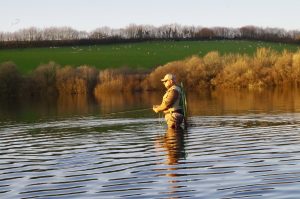
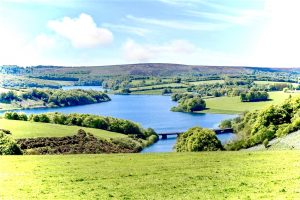
However, a long hot & dry spell in summer, a dominant high pressure with South to South-Easterly winds can get the fish again moving into deeper water.
This being the case we would then follow a similar approach to the early season fishing, seeking bank options with relatively deep water where many resident fish will be more than happy to hunt & the browns will still be lurking as they tend to remain in their own territories.
However, stock fish will find very deep water often following the contours as far as the dam area, parts of Bessoms, the south side of Cow moor & areas of the narrows & Steart bay.
Easterlies are never going to be a favourite wind direction with anglers anywhere as they can be cool, even in summer & tend to put fish down, you have no doubt heard a rhyme of some sort mentioned, such as “when the wind is from the east the fish bite the least!”
With the wind & fish behaviour in mind we have put together some fishing location tips for the lake.
Fishing by location around the lake with the wind a major consideration
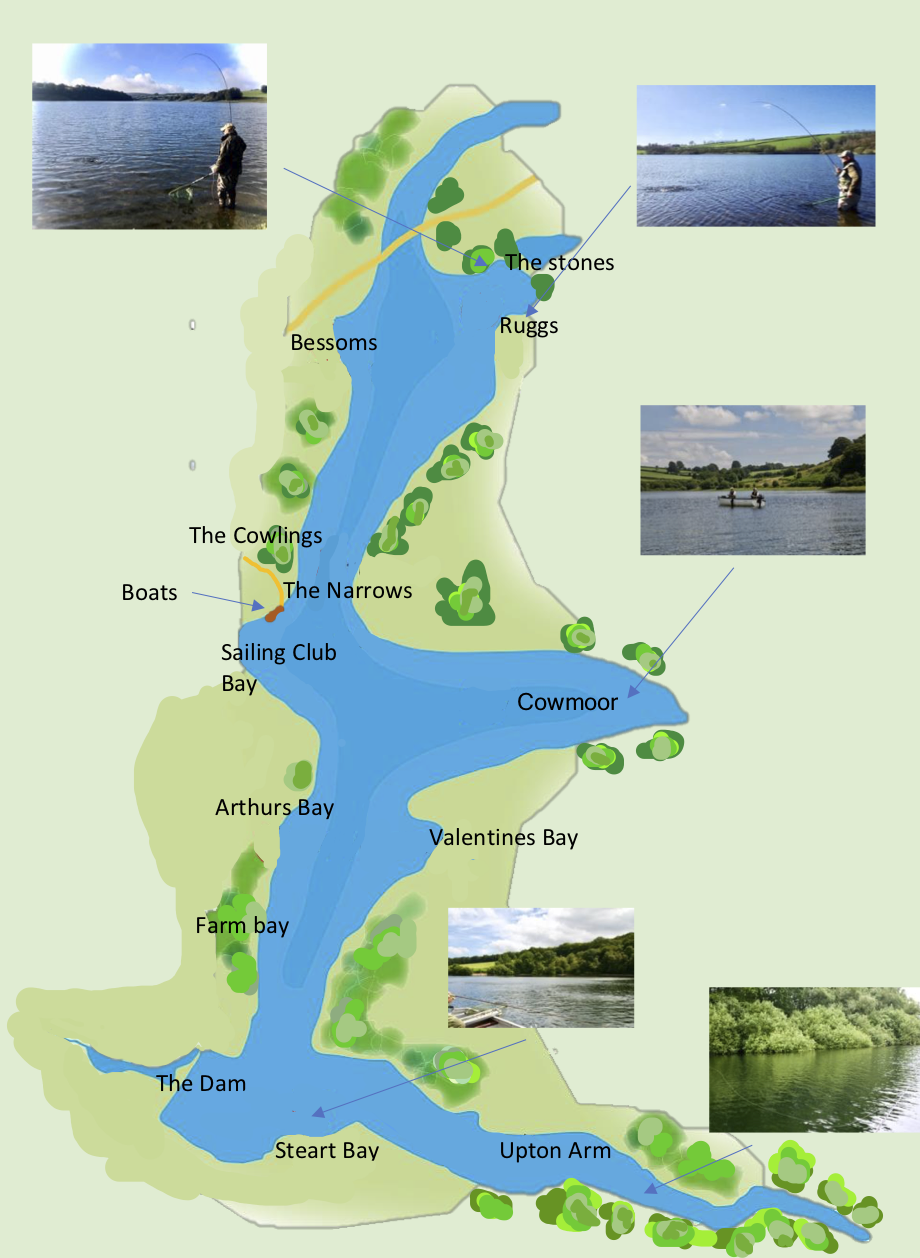
Bessoms Bay
This bay is one of the most popular areas of the lake both for bank & boat anglers, reasonably close to the car parks, the water offers a diverse range of depths, currents & contours while the shore offers a range of fishing options, as well as the area being renowned as a fish holding area. The depths can range from around 6ft in the centre of the bay & the coppice area near the feeder stream, either sides of this & the depths drop away into deeper water especially as you near the bridge or the trees further back the lake. Early season sink tip & intermediate lines work best, as the weather warms, floating lines are the norm with imitative patterns such as Diawl Bachs, buzzers & damsel nymphs. A great area to experience the Hawthorn hatch in May & the perfect spot to use daddy patterns when there is an offshore breeze especially in the Autumn.
Wind effect: Good except for Easterlies, make use of south/south westerly winds to try terrestrial dries, such as daddy longlegs or Hawthorn.
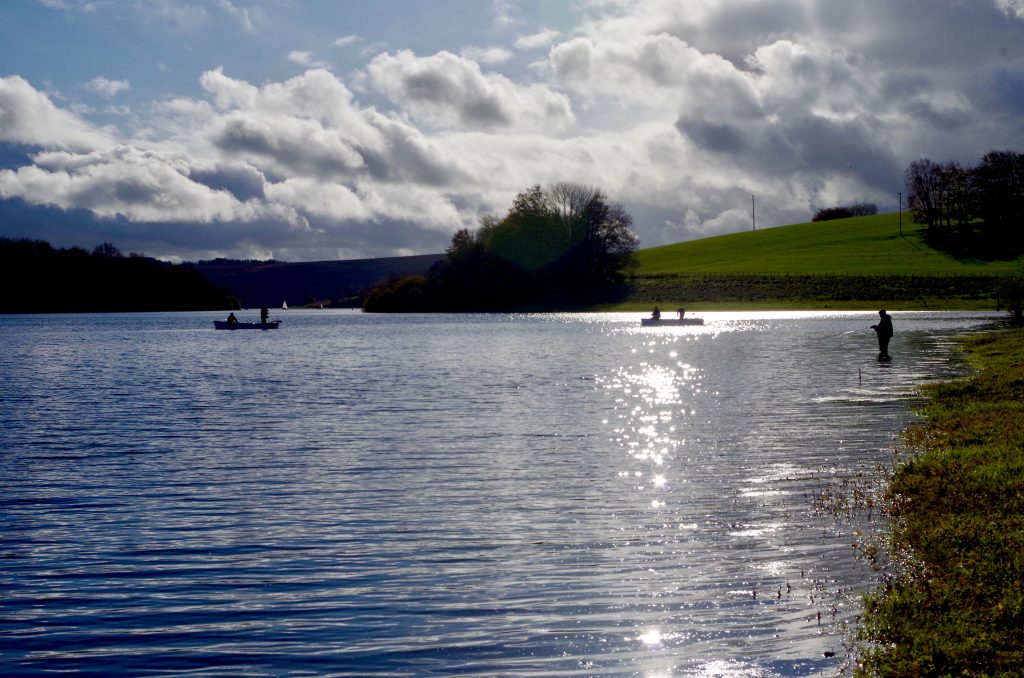
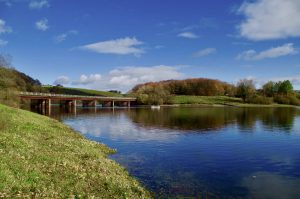
Bessoms Bridge
Easily accessible location offering some of the deepest water for bank anglers either side of the bridge. Great for when the fish are down deep & require the use of fast sink lines with boobies or lures. In the warmer months & summer evenings it can be a great spot for the evening rise.
Wind effect: Not good in an easterly but relatively sheltered when from the North.
The Stones
Easily accessed from the small anglers’ car park over Bessoms bridge. A rocky area provides for reasonably deep water close to the bank on two sides. The feeder stream seems to attract some big browns here towards the end of the season with lures on sinking lines or fast intermediates. A really sheltered spot for early & late season fishing when the wind is from any Northerly direction.
Wind effect: Generally good in most winds as shelter can usually be found on one bank or another.
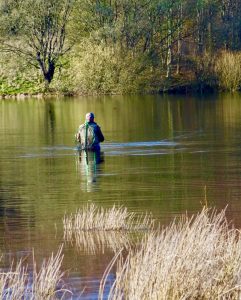
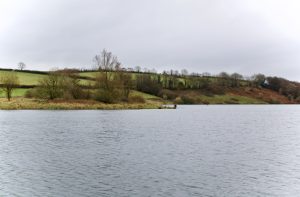
Ruggs Bay
A lovely gently curving bay requiring wading in most areas, a favourite for bank & boat anglers alike offering fishing in most wind conditions & seemingly always happy to offer up recently stocked fish as well as a few decent fish & perhaps surprisingly a decent head of browns seem to lurk here. An area great for the washing line & nymphing tactics, slow almost static retrieves have produced some stunning catches.
Wind effect: Can be fished relatively comfortably in most winds other than from the North West
Cow Moor
The large bay, opposite the boat jetty & yacht club, fishing is possible all the way around, with deep water on its south side & some terrific nymphing where the feeder stream enters in the shallows & weed filled area to the East. Quite a long walk but this section of the lake is worth making the effort for, Steep banks on both sides provide good shelter and will fish in a North or South wind. Look for the shrubs & bushes close to the edge which often mark hotspots, a great area for fishing the terrestrial patterns which get blown from the fields & undergrowth.
Wind effect: Good in North and South Winds, Westerlies can stir up the shoreline making the water very cloudy.
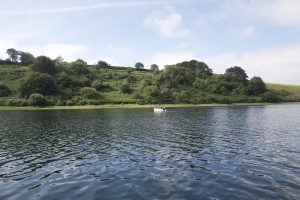
Valentines/Arthurs
Tree lined banks makes fishing quite difficult & a reasonably long walk is required, the small bay to the north of Valentines is referred to as Arthurs and provides peaceful fishing. Reasonably sheltered, this is a good area to escape a strong north wind or during an easterly. Look for the shelter that also marks the corner of the bay. A fence which runs into the water is another landmark, a reasonable cast here will put you over depths up to 8ft & there is definitely a chance of a decent brown.
Wind effect: OK in a light north wind and well protected from an easterly.
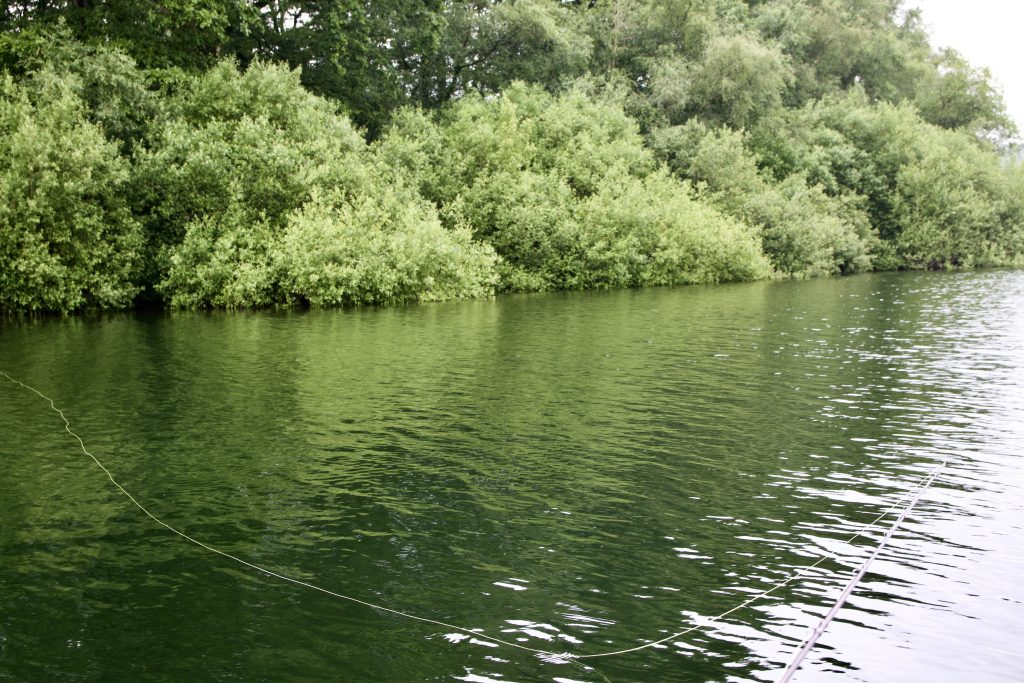
Upton Arm
Our favourite & a truly beautiful part of Wimbleball, it requires the longest of walks & most choose to fish from the boat. However, you won’t be disappointed, an abundance of beetles flying on the water in June offers great support & a bonus is the Mayfly hatch which takes place in late June to early July. A truly amazing place to fish but overlooked by the majority of anglers, enjoy the quiet solitude of this area & its wonderful fishing, expect to miss a lot of takes & lose a few, not so many Rainbows here but the Browns most are often lean fighting machines with plenty of instinct, energy & cunning fighting prowess…
Wind effect: Anything other than from the West, but best in the calm from June onwards.
Steart Bay and Dam
The bay can be accessed via the bridleway leading from the car park on the Watchet road. Otherwise it is a pleasant but quite long walk through the forest on the west bank and across the dam, some good close in deep water here, fish are often resident & can be large but will be more likely to take imitative flies than lures. Try Damsel nymphs, black & Peacock spiders, hare’s Ears & buzzers. Fish with a slow figure of eight retrieve and you could pick up a nice overwintered fish or even a decent brownie. Be sure to fish to the left of the buoyed rope that marks the no-fishing area.
Wind effect: Best fished in light winds as it can be quite swirly around the dam.
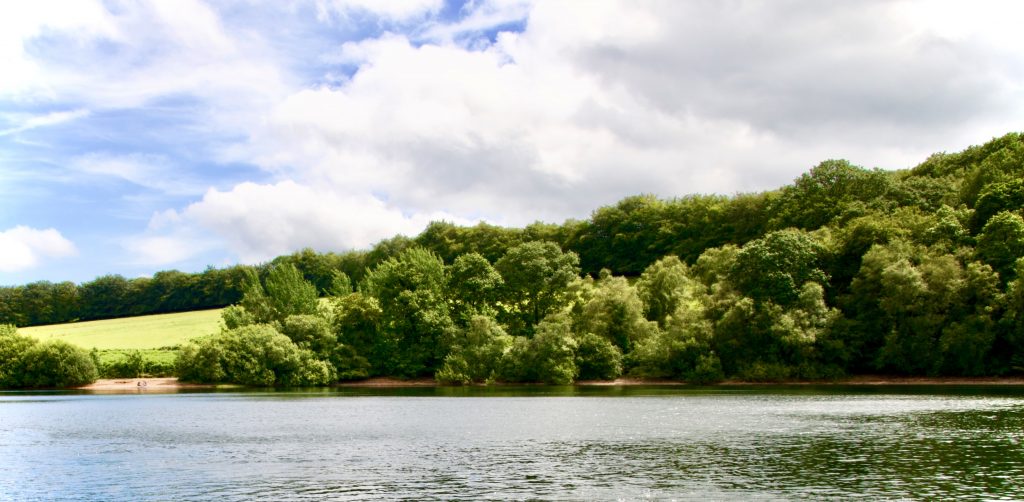
Farm Bay
A bank marked by old outbuildings. Quite a steep approach offers deep water, lending itself to sinking lines. However, with a mixture of stones and silt, large hatches of fly occur and as the sun moves around and begins to dip good sport can be enjoyed on the surface with a floating line. Easy to access by parking above the sailing club and walking across the fields.
If the wind is blowing hard from the north, this bay can be quite sheltered but add some east and it becomes unfishable.
Wind effect: Good in light winds but not anything from the east.
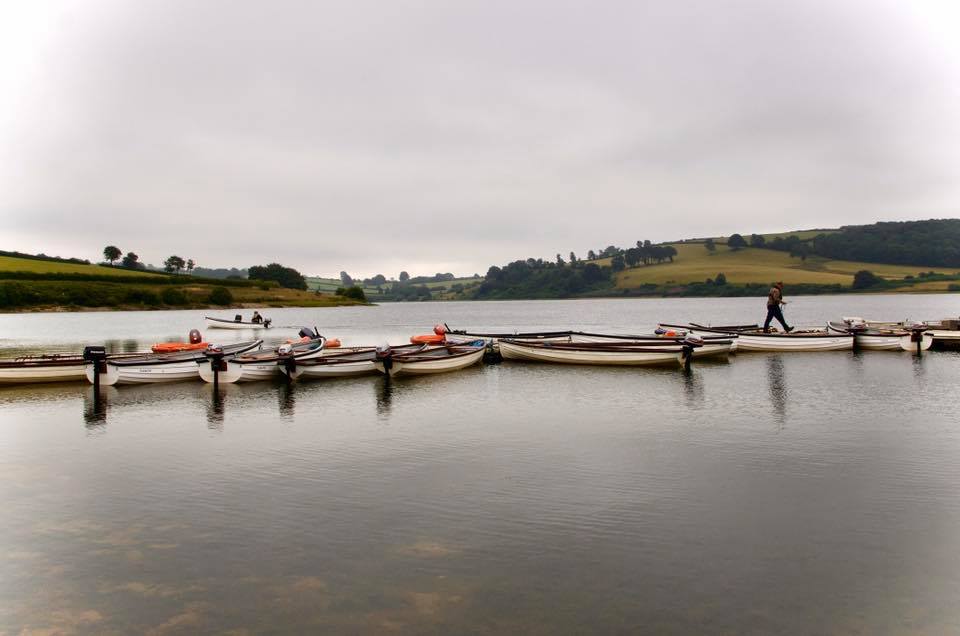
Sailing Club
A reasonably deep-water mark offering little in the way of features. The most popular spot is under the trees next to the fence that marks the boundary of the sailing club grounds next to the metal fisherman sculpture. Please avoid fishing in the sailing club area to the right of the fence when looking across the lake. Stock fish are often lurking here especially after a period of Easterlies & can offer some great close in sport, particularly along the line of trees towards the yachts from the jetty area. The bay will hold fish in the early season & the height of the summer when fish are looking for some slightly deeper water, beware of a hard fighting fish taking you around a mooring buoy.
Wind effect: Not good in a North or East wind but sheltered in a southerly and pleasant during winds from the west.
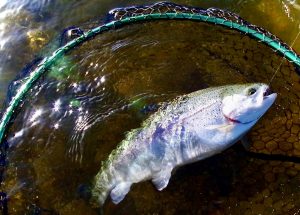
Cowlings Bay
Can be a good spot with a reasonably shallow margin with plenty of insect life. Directly below the ticket hut and car park, A reasonable cast will put you amongst the fish and there is the added bonus of fishing the flies over a deep gully running diagonally out from the shore as well as some old walls. Good spots include a wide gap among two rows of trees, just mind the bench & the footbath close behind. Fishes well in the Spring with tadpoles & most of the season with a team of nymphs or a dry fly, not so good if the water is low.
Wind effect: Good in various winds except an easterly.
The Narrows
Easily accessible bank from the ticket hut and popular with anglers casting a line as they progress around to Bessoms. The deep water holds fish, trout seem to patrol along this shoreline which is really only accessible from the west bank, Try casting alongside the bush and twitching a fly enticingly past the branches, a Hawthorn fly in May might get you some great surface action, as will a beetle pattern in June.
Wind effect: Hard to fish in strong winds. Not too nice in an easterly.
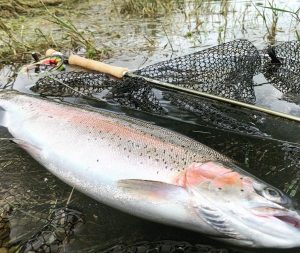
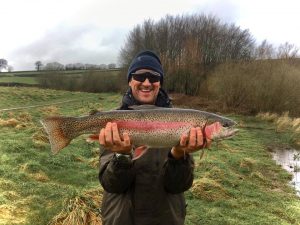
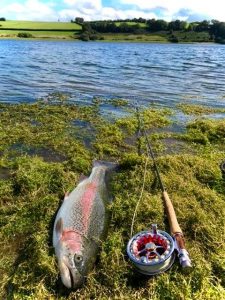
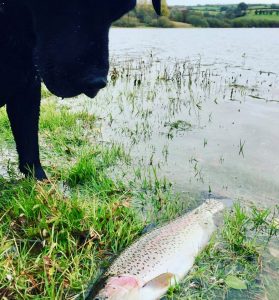


Leave a Reply
You must be logged in to post a comment.